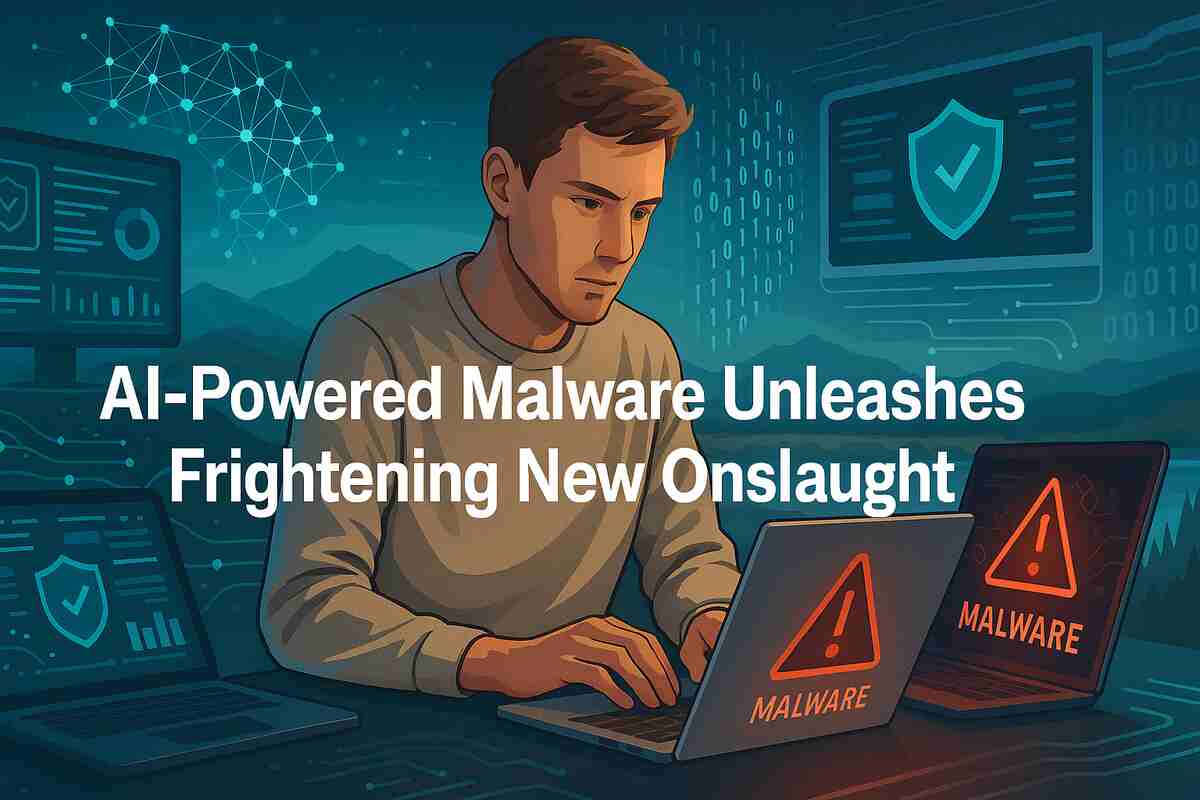Physical Address
304 North Cardinal St.
Dorchester Center, MA 02124
Physical Address
304 North Cardinal St.
Dorchester Center, MA 02124

In a world where remote work and digital freedom are surging, a new breed of cyber threat is evolving at breakneck speed. AI-Powered Malware has entered the scene—malicious code enhanced with artificial intelligence, capable of adapting, learning, and launching targeted attacks with chilling precision.
For freelancers and digital nomads, who rely on open networks, third-party platforms, and decentralized work routines, this smart malware poses an existential threat. It’s not just about stolen data or locked files anymore; it’s about self-evolving viruses that outpace traditional defenses and undermine the very structure of freelance security.
This comprehensive guide unpacks the nature of AI-powered malware, how it’s reshaping cybercrime, and what freelancers must do to protect their livelihood in this new digital battleground.
AI-powered malware uses machine learning and artificial intelligence techniques to enhance its capabilities. Unlike traditional malware that follows static instructions, this advanced form can:
According to IBM’s X-Force Threat Intelligence Index, cyberattacks using AI-driven tools are growing at an alarming rate, often targeting small and medium-sized enterprises, including independent professionals.
This intelligence makes it particularly dangerous in unmonitored freelance environments.

Freelancers often lack robust cybersecurity infrastructure. Their reliance on cloud-based tools and public Wi-Fi makes them low-hanging fruit for AI-based threats.
The nature of freelancing—cross-platform, asynchronous, and global—makes mitigation challenging unless tackled head-on.

Initially a banking Trojan, Emotet began incorporating AI modules in 2022 to auto-generate spear-phishing content, targeting freelancers in marketing, design, and IT sectors.
AI-based ransomware attacks were observed altering their strategies in real time based on network responses, specifically targeting decentralized teams.
A proof-of-concept malware that only activates when certain face, voice, or location data is detected—posing a serious threat to individuals rather than just organizations.
These examples highlight the shift from mass attacks to personalized, smart infiltration.

Antivirus software and firewalls, while still necessary, are based on signature detection. AI malware evolves too quickly for these systems to keep pace.
Freelancers must move toward behavior-based, AI-enhanced defense tools.
| Tool | Purpose | AI Integration |
|---|---|---|
| CrowdStrike Falcon | Endpoint protection | Machine learning threat detection |
| Bitdefender GravityZone | Antivirus and threat intelligence | AI-based behavioral analysis |
| SentinelOne | Autonomous endpoint protection | Predictive AI engine |
| Sophos Intercept X | Next-gen antivirus | Deep learning models |
| Darktrace | Network anomaly detection | AI-driven threat response |
Until such frameworks are enforced, freelancers must stay informed and self-reliant.
The emergence of AI-powered malware is not a distant cyberpunk fantasy—it’s a present-day challenge with devastating potential. For freelancers and digital nomads, whose digital independence is both their strength and vulnerability, the threat is particularly pronounced.
Smart malware learns, evolves, and strikes when you’re most unprepared. But so can your defenses. By adopting proactive, intelligent security habits, freelancers can stay a step ahead of malicious AI—preserving their freedom, safeguarding their data, and securing the future of independent work in a dangerously intelligent world.